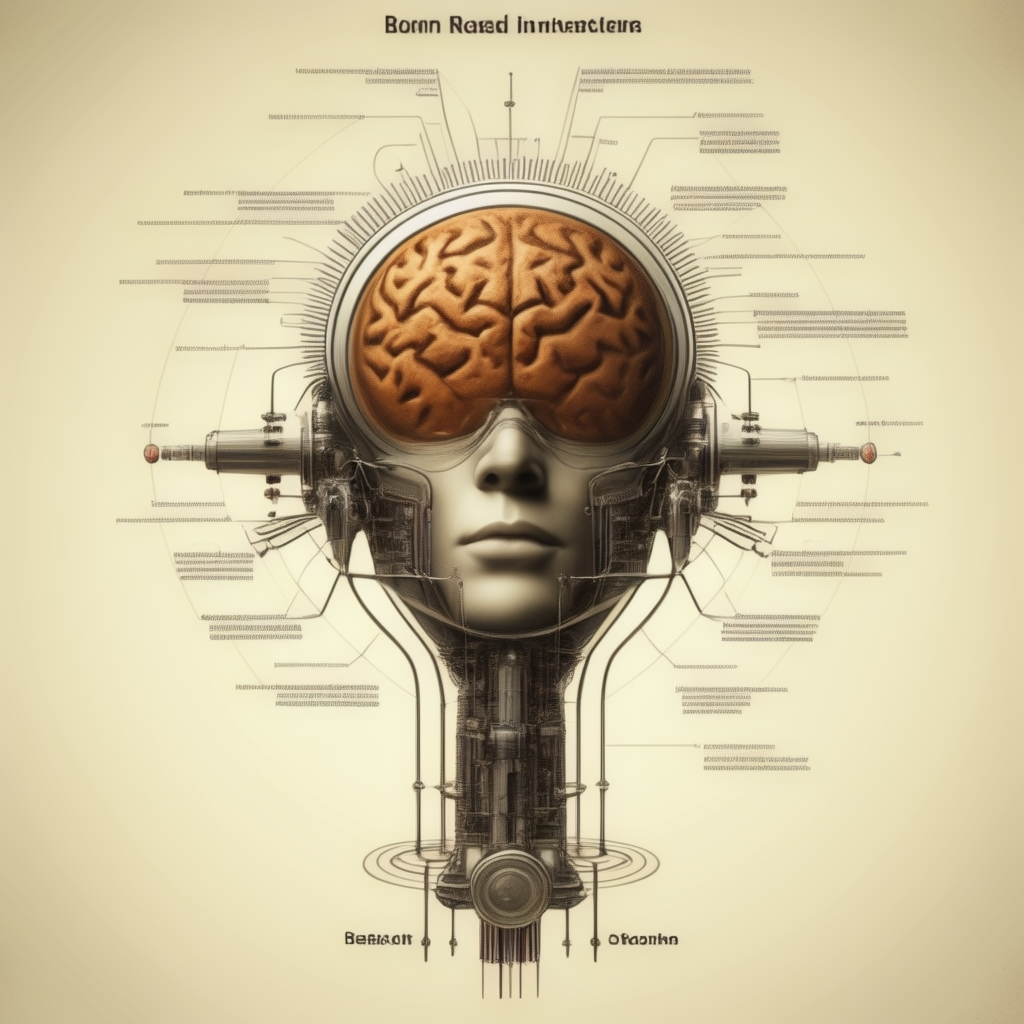The GPS Program: A Pioneer in “Thinking Humanly” in AI
Artificial Intelligence (AI) has made remarkable strides over the past few decades, evolving from basic computational models to sophisticated systems capable of performing tasks that require human-like thinking. One of the pioneering programs that embodied the “thinking humanly” approach in AI is the General Problem Solver (GPS). Developed in the late 1950s by Allen Newell and Herbert A. Simon, GPS was among the first attempts to create a machine capable of mimicking human problem-solving abilities. This blog post delves into the history, functionality, significance, and impact of the GPS program on the field of AI.
Historical Context and Development
The development of GPS began in the late 1950s, a period marked by rapid advancements in computer science and the birth of artificial intelligence as a formal field of study. Allen Newell and Herbert A. Simon, both prominent figures in cognitive psychology and computer science, were driven by the desire to understand and replicate human thought processes. Their work on GPS was part of a broader research agenda to explore how computers could be used to simulate cognitive functions.
GPS was designed to solve a wide range of problems by employing a general method of reasoning, rather than being tailored to a specific task. This generality was a key innovation, distinguishing GPS from earlier AI programs that were limited to narrowly defined problems.
Functionality and Mechanism
At its core, GPS was based on the concept of means-ends analysis, a heuristic method used by humans to solve problems. Means-ends analysis involves identifying the differences between the current state and the goal state, and then taking actions to reduce these differences. The process can be broken down into the following steps:
- Identify the Goal: Determine the final state or solution desired.
- Analyze the Current State: Assess the present conditions and variables involved in the problem.
- Determine the Difference: Recognize the gap between the current state and the goal state.
- Select an Operator: Choose an action or step that can reduce the difference.
- Apply the Operator: Implement the selected action to move closer to the goal.
- Repeat: Continue the process until the goal is achieved.
GPS utilized a set of operators and a problem space defined by the user. The operators were functions that transformed one state into another, and the problem space was the set of all possible states that could be reached through the application of these operators. By systematically exploring this space, GPS aimed to find a sequence of operators that would lead from the initial state to the goal state.
Significance and Innovations
The GPS program was groundbreaking for several reasons:
- Human-Like Problem Solving: GPS was one of the first AI systems designed to solve problems in a manner analogous to human thought processes. This focus on mimicking human cognition set a precedent for future AI research.
- General Applicability: Unlike specialized programs that could only address specific tasks, GPS was intended to be a general problem solver. This universality was a significant step forward in the quest to create flexible, adaptable AI systems.
- Heuristic Methods: The use of means-ends analysis and heuristic search techniques in GPS influenced the development of later AI algorithms. Heuristics remain a fundamental component of modern AI, helping to efficiently solve complex problems.
- Cognitive Modeling: GPS contributed to the field of cognitive psychology by providing a model of human problem-solving behavior. Newell and Simon used insights from GPS to formulate theories about human cognition and decision-making.
Impact on AI and Legacy
The influence of GPS extends far beyond its immediate success as a problem-solving program. Several key contributions and legacies of GPS include:
- Foundation for AI Research: GPS laid the groundwork for subsequent AI research, particularly in the areas of heuristic search and cognitive modeling. Many modern AI systems trace their conceptual origins to the principles established by GPS.
- Development of Expert Systems: The techniques and concepts pioneered by GPS were instrumental in the creation of expert systems, which use knowledge and inference rules to solve specialized problems in fields like medicine, engineering, and finance.
- Cognitive Psychology: GPS provided empirical data and a computational framework that enriched the understanding of human cognition. Newell and Simon’s work on GPS contributed to their development of the Information Processing Theory, which describes human thought as a sequence of information-processing steps.
- AI Methodologies: The heuristic methods and problem-solving strategies introduced by GPS have been incorporated into a wide range of AI methodologies, from natural language processing to robotics.
Modern Reflections and Continuing Influence
While GPS itself is no longer in use, its legacy continues to shape contemporary AI research. Modern AI systems often combine heuristic approaches with machine learning, neural networks, and other advanced techniques to tackle problems with a level of sophistication that GPS’s creators could only dream of.
The “thinking humanly” approach that GPS exemplified remains a guiding principle in AI. By striving to understand and replicate human cognition, AI researchers aim to create systems that can interact naturally with people, understand complex contexts, and adapt to new situations.
Further Contributions and Detailed Points
Advanced Heuristic Techniques
Enhanced Heuristics:
- Concept: Beyond means-ends analysis, GPS utilized additional heuristic methods to streamline problem-solving.
- Implementation: Incorporating heuristic evaluation functions to prioritize certain paths over others based on their potential to reach the goal more efficiently.
Integration of Symbolic Logic
Symbolic Logic:
- Concept: GPS employed symbolic representations to handle complex problem spaces.
- Implementation: Using symbols to denote objects, actions, and states within the problem, allowing for abstract manipulation and reasoning.
Early Exploration of Artificial General Intelligence (AGI)
AGI Exploration:
- Concept: GPS was an early foray into creating a form of general intelligence capable of tackling diverse problems.
- Implementation: Designing the system to adapt its problem-solving approach to a variety of tasks, showcasing a rudimentary form of AGI aspirations.
Influence on Software Engineering
Software Engineering Impact:
- Concept: GPS introduced methodologies that influenced software development practices.
- Implementation: The structured approach to problem-solving and system design informed early software engineering principles, emphasizing modularity and reusability.
Contributions to Educational Tools
Educational Tools:
- Concept: GPS principles have been applied in educational software to teach problem-solving skills.
- Implementation: Developing interactive programs that guide students through problem-solving processes, leveraging GPS’s systematic approach.
Simulation of Human Reasoning
Human Reasoning Simulation:
- Concept: GPS aimed to replicate human cognitive processes more closely than previous systems.
- Implementation: Modeling the step-by-step reasoning humans use to tackle problems, providing insights into cognitive processes.
Cognitive Load Reduction
Cognitive Load Reduction:
- Concept: GPS helped to explore methods to reduce cognitive load in problem-solving.
- Implementation: Breaking down complex problems into simpler subproblems, making them more manageable for both humans and machines.
Pioneering Human-Computer Interaction (HCI)
HCI Pioneering:
- Concept: GPS contributed to the understanding of how humans interact with computers.
- Implementation: Studying the interface between the user and the machine, laying the groundwork for user-friendly AI systems.
Application in Decision Support Systems
Decision Support Systems:
- Concept: GPS principles have been adapted for use in decision support systems (DSS).
- Implementation: Using heuristic algorithms to assist in making informed decisions in various fields such as business and healthcare.
Early Natural Language Processing (NLP) Techniques
NLP Techniques:
- Concept: Elements of GPS influenced the development of early natural language processing systems.
- Implementation: Applying symbolic logic and heuristic methods to understand and generate human language.
Introduction of Meta-Problem Solving
Meta-Problem Solving:
- Concept: GPS introduced the concept of solving problems about how to solve problems.
- Implementation: Developing strategies to optimize the problem-solving process itself, enhancing efficiency and effectiveness.
Influence on Cognitive Architectures
Cognitive Architectures:
- Concept: GPS has influenced the development of cognitive architectures that model human thought processes.
- Implementation: Creating comprehensive frameworks that simulate human cognitive functions, such as memory and reasoning.
Foundations for Automated Planning
Automated Planning:
- Concept: GPS’s methodologies laid the groundwork for automated planning systems in AI.
- Implementation: Using heuristic search techniques to generate sequences of actions for achieving specific goals in complex environments.
Broader Impacts and Continuing Influence
Philosophical Implications:
- Exploration: GPS raised important philosophical questions about the nature of intelligence and the possibility of machines exhibiting human-like thought.
- Discussion: Engaging with these questions has driven forward discussions in both the AI community and philosophical circles.
Cross-Disciplinary Applications:
- Adaptation: Concepts from GPS have been adapted for use in fields outside traditional AI, including operations research and management science.
- Example: Implementing GPS principles to optimize logistical operations and resource management.
Foundations of Machine Learning Integration:
- Integration: GPS’s heuristic approaches have been integrated with machine learning techniques to create more robust AI systems.
- Advancement: Enhancing the problem-solving capabilities of AI by combining rule-based reasoning with data-driven learning.
Conclusion
The General Problem Solver (GPS) was a pioneering program that embodied the “thinking humanly” approach in artificial intelligence. Developed by Allen Newell and Herbert A. Simon in the late 1950s, GPS introduced innovative concepts in heuristic problem-solving and cognitive modeling that have had a lasting impact on the field of AI. Its legacy endures in the principles and methodologies that continue to guide AI research and development today. As we build increasingly sophisticated AI systems, the foundational work of GPS serves as a reminder of the importance of understanding and replicating human thought processes in the quest for truly intelligent machines.
The General Problem Solver (GPS) program stands as a seminal achievement in the history of artificial intelligence, embodying the “thinking humanly” approach and paving the way for numerous advancements in AI research and application. Its innovative use of heuristics, symbolic logic, and general problem-solving techniques has had a profound and lasting impact on the field, influencing everything from cognitive modeling to software engineering, decision support systems, and beyond. GPS’s legacy continues to inspire and inform the development of AI systems that strive to replicate and augment human intelligence.






